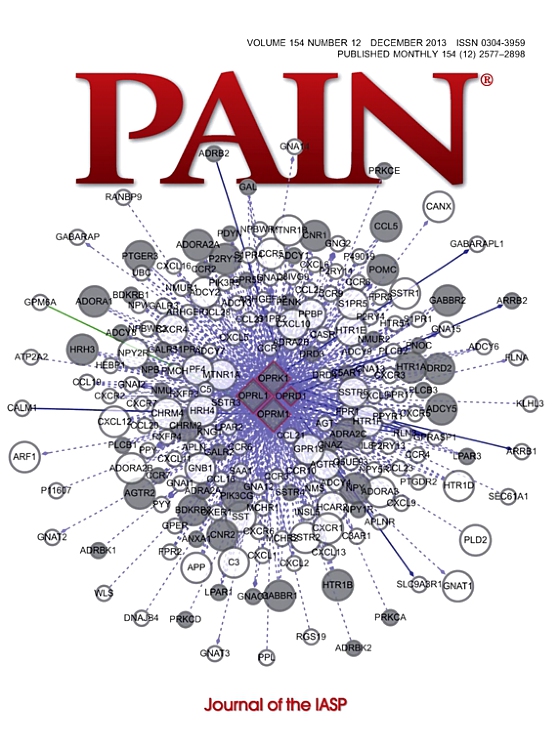伏隔核-前额叶连通性作为慢性腰痛的预测因子。
IF 5.9
1区 医学
Q1 ANESTHESIOLOGY
引用次数: 0
摘要
伏隔核(NAc)及其前额叶连接与慢性腰痛(CLBP)的病因有关。动物和人体研究表明,NAc及其连接在从急性到CLBP的转变中起着关键作用。然而,长期CLBP患者的全脑连通性尚未得到系统研究。使用功能连接组学方法,我们检查了CLBP患者和健康对照(hc;总N = 197)。确定的连接与CLBP强度相关(多重比较校正),并在2个独立队列中验证其可重复性。这些临床相关且可重复的连接进一步利用机器学习对CLBP进行分类。与HC (n = 41)相比,CLBP个体(n = 39)表现出NAc壳核与前额叶皮质(PFC)之间的超连通性。虽然几个NAc-PFC连接与较高的CLBP强度有关,但在验证队列中,只有左NAc外壳和核心与右背外侧PFC之间的连接被重现(总CLBP n = 53;HC n = 64)。伏隔核-右背外侧PFC连接使用逻辑回归达到84%的分类准确率。机器学习分析展示了基于知识的特征选择如何可靠地检测CLBP。总的来说,我们报告了NAc- pfc连接一致地将CLBP患者与HC患者区分开来,并表明NAc与涉及动机、决策和疼痛调节的大脑区域之间存在异常相互作用。本文章由计算机程序翻译,如有差异,请以英文原文为准。
The nucleus accumbens-prefrontal connectivity as a predictor of chronic low back pain.
The nucleus accumbens (NAc) and its prefrontal connections are implicated in the aetiology of chronic low back pain (CLBP). Animal and human studies suggest that the NAc and its connections play a critical role in the transition from acute to CLBP. However, whole-brain connectivity in individuals with longstanding CLBP has not been systematically investigated. Using a functional connectomics approach, we examined whether the 2 NAc subregions-shell and core-exhibit different whole-brain connectivity between CLBP patients and healthy controls (HCs; total N = 197). The identified connections were correlated with CLBP intensity (multiple comparisons corrected), and their reproducibility was validated in 2 independent cohorts. These clinically relevant and reproducible connections were further leveraged to classify CLBP using machine learning. Compared with HC (n = 41), individuals with CLBP (n = 39) exhibited hyperconnectivity between the NAc shell and core and the prefrontal cortex (PFC). Although several NAc-PFC connections were linked to higher CLBP intensity, only the connections between the left NAc shell and core to the right dorsolateral PFC were reproduced in validation cohorts (total CLBP n = 53; HC n = 64). Nucleus accumbens-right dorsolateral PFC connections achieved 84% classification accuracy using logistic regression. The machine learning analyses demonstrate how knowledge-based feature selection can reliably detect CLBP. Overall, we report that NAc-PFC connectivity consistently distinguishes people with CLBP from HC and suggest an abnormal interaction between the NAc and brain regions involved in motivation, decision-making, and pain regulation.
求助全文
通过发布文献求助,成功后即可免费获取论文全文。
去求助
来源期刊

PAIN®
医学-临床神经学
CiteScore
12.50
自引率
8.10%
发文量
242
审稿时长
9 months
期刊介绍:
PAIN® is the official publication of the International Association for the Study of Pain and publishes original research on the nature,mechanisms and treatment of pain.PAIN® provides a forum for the dissemination of research in the basic and clinical sciences of multidisciplinary interest.
 求助内容:
求助内容: 应助结果提醒方式:
应助结果提醒方式:


